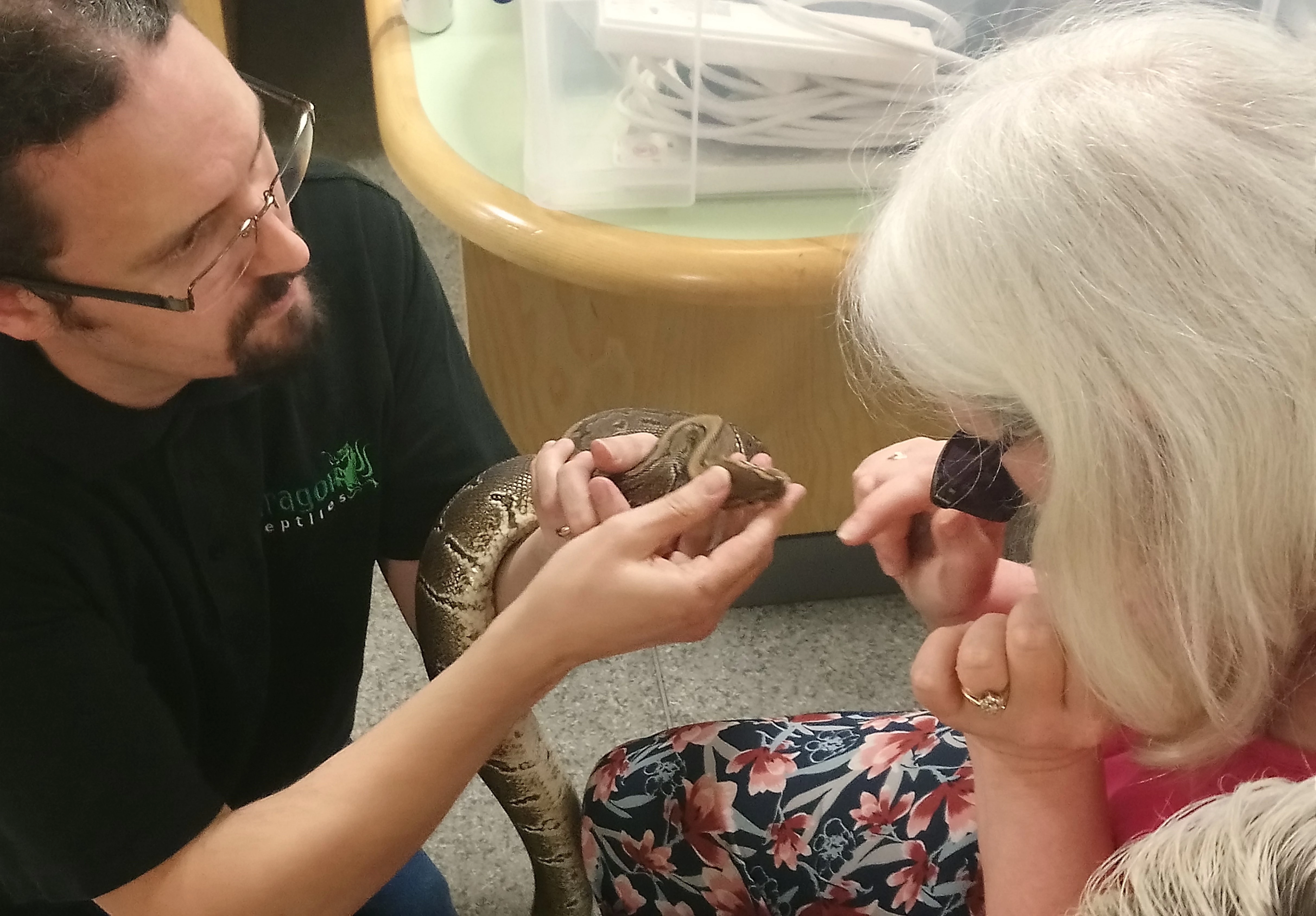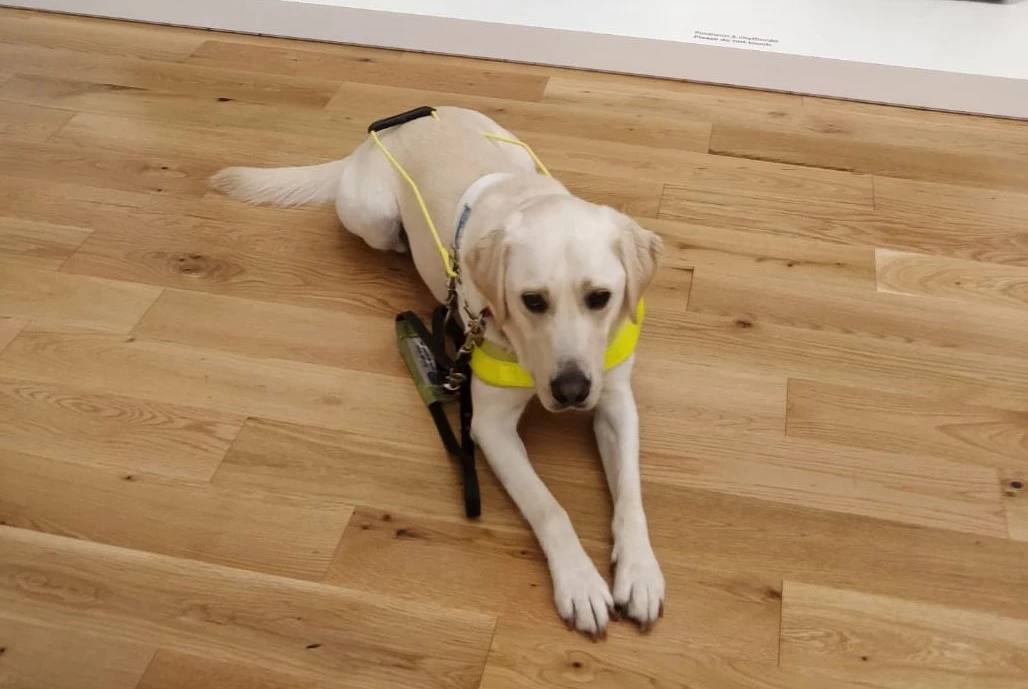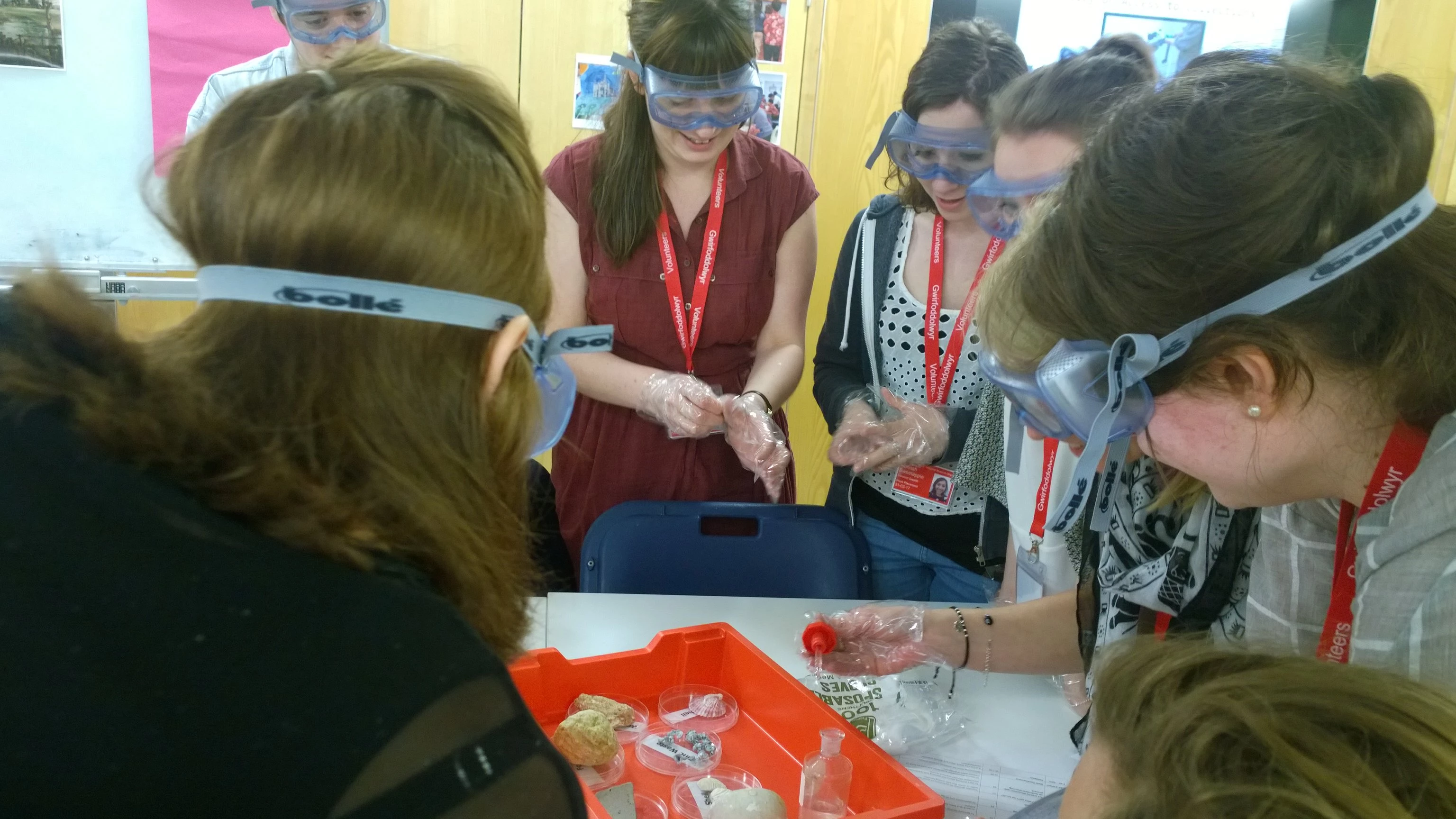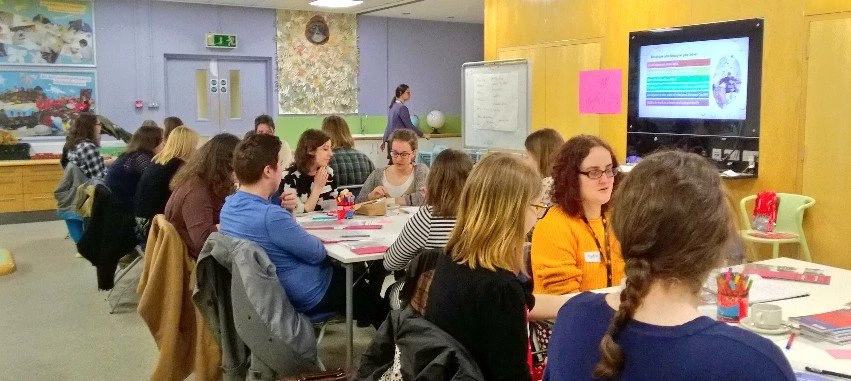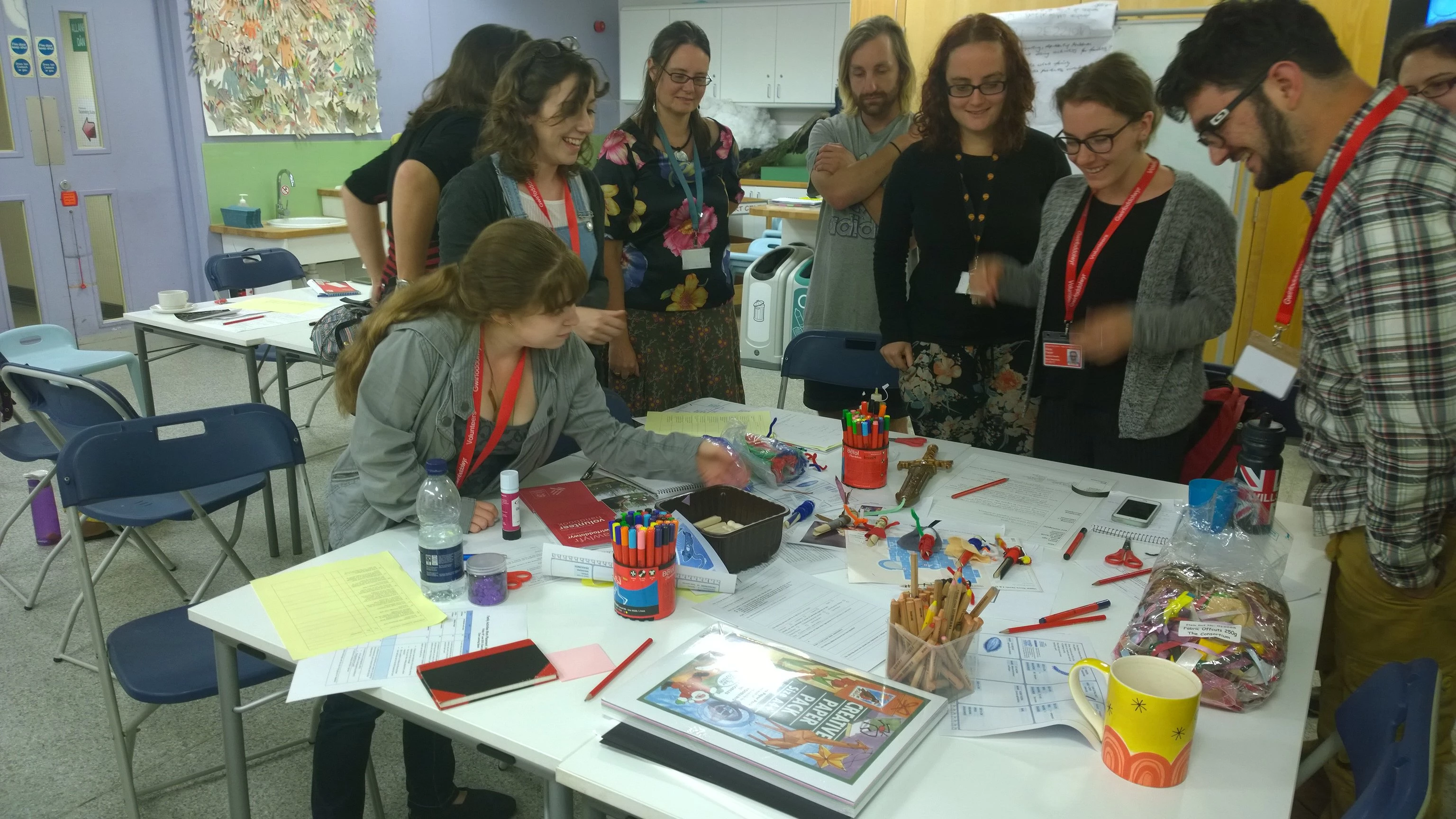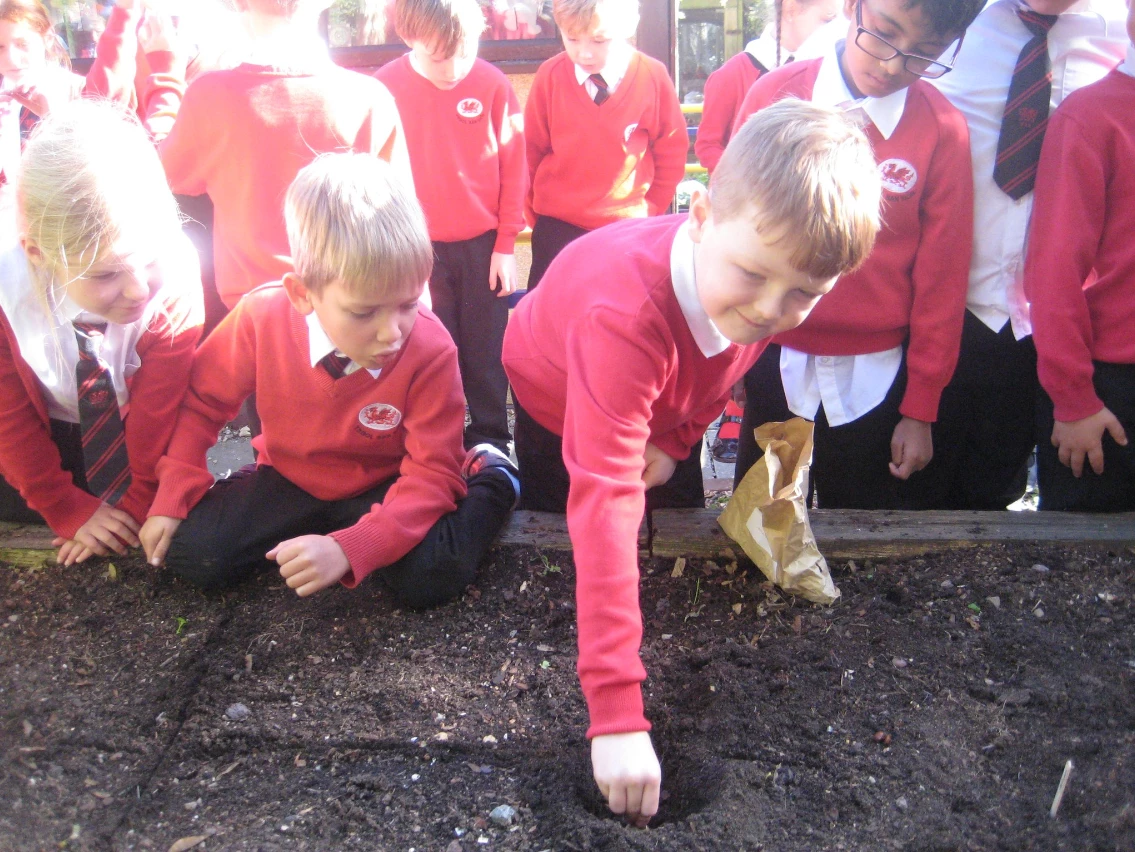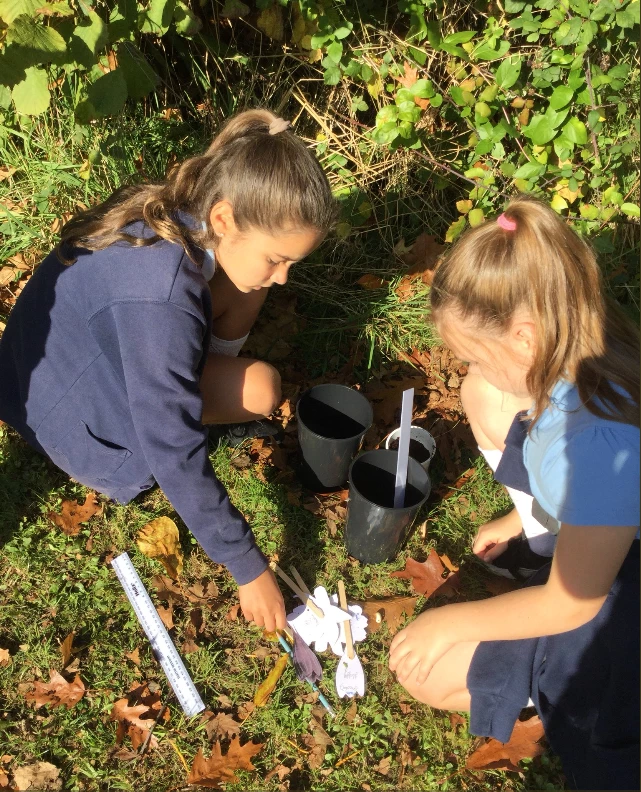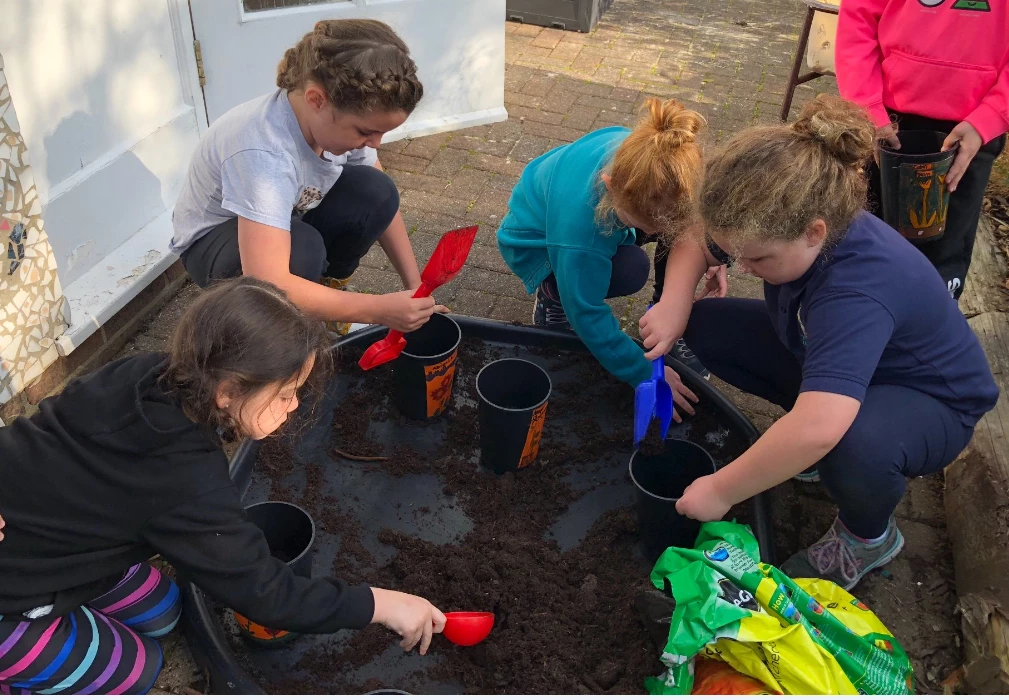Mae ein planhigion yn tyfu
, 20 Ionawr 2020
Helo Cyfeillion y Gwanwyn,
Diolch am eich gwaith ar yr ymchwiliad Bylbiau Gwanwyn i Ysgolion. Rwyf wedi mwynhau darllen y sylwadau sef wedi ei rhannu hefo'r data tywydd. Diolch am eich negesau, ac rwyf yn gobeithio bod chi yn mwynhau'r prosiect.
Mae nifer ohonoch wedi rhoi gwybod bod eich planhigion wedi cychwyn tyfu. Mae hyn yn newyddion gwych! Plîs cymrwch luniau a rhannwch dros Twitter neu mewn e-bost.
Mae eich planhigion yn tyfu:
Albert Primary School: The temperature changed throughout the week and there was a lot of rain. We think the bulbs may be starting to sprout.
Carnbroe Primary School: The plants are growing well.
Sandal Magna Community Academy: Some of our plants have started to grow leaves.
Ysgol Bro Pedr: A lovely dry week, apart from Friday. Our daffodil bulbs are starting to grow - exciting
High Cross Primary School: Hi professor plant the class’s plants are growing quite fast.
Hendredenny Park Primary: Hello, we can see little sprouts in our pots. There was no dead fly’s this week but there was a little bit of dirt .Bye
Hendredenny Park Primary: Some plant have started to sprout out of the soil.
High Cross Primary School: Hi professor plant the class’s plants are growing quite fast.
Sylwadau am y tywydd:
Ysgol Ysbyty Ifan: Glaw trwm iawn a llifogydd yng Ngogledd Lloegr ddoe. Ond nid mor ddrwg yma. Pawb yn sgubo dail yr Hydref oddi ar yr iard ddoe a heddiw am ei bod yn oerach. Bl 3 a 4 wedi casglu'r afalau oddi ar ein coeden 5 Kilo! Tarten wysnos nesa! Athro’r Ardd: Da iawn Cyfeillion y Gwanwyn. Rydych wedi bod yn brysur!
Ferryside V.C.P School: Roedd y tywydd wythnos hon yn heulog ac yn oer. Dim ond 4ml o law a nowsweithu oer.
Arkholme Primary School: We had a lot of rainfall this Thursday, Maisie and I really enjoyed collecting the data this week. Unfortunately Mr Bonwick's Plant pot got knocked over, not much sign of any growth. Professor Plant: I’m sorry to hear one of your pots was kicked over! I’m glad to hear that you are enjoying the project though.
Saint Anthony's Primary School: The temperature gradually decreased until Friday when it dropped sharply. Professor Plant: Gosh bulb buddies, a drop from 8 to -2 in temperature!
St Fergus' Primary School: It has been very windy, cold and stormy this week.
Darran Park Primary: We've lots and lots of rain. Today we had hail stones at lunch time. It feels very cold in the wind.
Sanquhar Primary School: Thursday night we had snow so Friday morning reading it had melted.
Stanford in the Vale Primary School: A wet week and very cold! They are saying snow flurries next week.
Pil Primary School: Rained a lot in Pyle this week.
Arkholme Primary School: This week we noticed that it was quite cold also there was not much rain fall ether.
Bursar Primary Academy: We had 130ml of rain on Monday, 124ml on Thursday. Lincolnshire has had a large amount of rain.
St Fergus' Primary School: The flower beds and pots look tidier but there are still more leaves to be cleared. It was a mix of weather this week with some rain at the beginning of the week and then got colder at the end of the week. The frost stayed most of the day today (Friday).
Ysgol Bro Pedr: What a beautiful end to the week. Much better than the damp miserable weather at the start.
Oldfleet Primary School: Warmer all week but lots of wet play times
Stoneferry Primary School: Another rain-filled week!
Georgetown Primary (Tredegar): There was snow on Wednesday night from about 7.30pm. When we got up on Thursday everything was white. It started to rain and the snow cleared.
Arkholme Primary School: We have noticed that on Monday there was a very high rainfall. We had 3 very frosty nights at the start of the week. We have really enjoyed taking the reading.
Aberdare Park Primary School: We had a fall of snow on overnight on Wednesday. This turned to sleet early Thursday morning and then rain.
Darran Park Primary: We had some snow on Wednesday evening. It was really cold.
Henllys CIW Primary: The temperature stayed fairly consistent and the rain was weird due to the fact that it was wet on Monday, getting dryer and dryer until Thursday when it rained really hard and then all the way back to zero.
Stanford in the Vale Primary School: What a week of heavy rain and we experienced the chill factor also - starting to get cold!
Ysgol Bro Pedr: A mixture of all weathers this week - snow, sunshine, rain, frost, hailstones, wind!!!
Hudson Road Primary School: It felt chilly this week and cold. On Friday it was very rainy and it is supposed to snow!
Bardney Primary School: Rain fall on Friday 8th was actually 23mm but no option from drop down box. Rounded to the nearest 10. Professor Plant: Well done Bulb Buddies, that’s exactly what you need to do. Keep up the good work
Clifton Primary School: This is the first year we have been involved in the bulb project and we have really enjoyed our first week! On Thursday/Friday, Hull had an awful lot of rain which made measuring the rainfall quite interesting. We're looking forward to seeing everyone's results.
Bryncoch CiW Primary School: We have rounded the rainfall to the nearest 10mm
Professor Plant: Well done Bulb Buddies, that’s exactly what you need to do. Keep up the good work
Dalbeattie Primary School: On one day there was lots of drizzle but the next rainfall reading did not show anything other than a few droplets. Presumably, during the 24 hour period between readings, some of the water had evaporated out of the rain gauge? ProfessorPlant: That’s right Bulb Buddies.
Darran Park Primary: We have noticed that the temperature is getting colder.
Stanford in the Vale Primary School: Hello its Riley. We have planted all our bulbs and have been observing the rainfall and temperature this week - hardly any rain and we have said it’s getting colder - goodbye and have a nice weekend - Regards Riley
Stoneferry Primary School: Massive amount of rainfall this week - bulbs have had a lot of water. Children loved inputting the data with the teacher.
New Abbey Primary School: We have had a very cold, frosty but bright later on start to the week. However, today has warmer but with non-stop rain all day!
Sylwadau cyffredinol:
Ysgol Gymraeg Dewi Sant (Llanelli): Helo Athro rydym yn mwynhau gofalu am y bylbiau. Diolch am anfon y bylbiau atom ni. Faint o ysgolion sy'n cymryd rhan? Pryd ydych chi'n credu bydd y bylbiau yn agor? Ni'n gyffrous iawn i weld y blodau! Athro’r Ardd: Helo Ysgol Gymraeg Dewi Sant, diolch am eich cyfraniad i’r prosiect. Mae 175 o ysgolion yn cymryd rhan yn yr ymholiad. Mae’n werth gwylio eich planhigion yn agos o hyn ymlaen, fel byddech yn gweld pryd maen nhw yn blodeuo.
Ysgol Gymraeg Caerffili: Plant wedi mwynhau cofnodi'r tywydd ac wedi cofio ei wneud pob dydd. Athro’r Ardd: Da iawn Cyfellion y Gwanwyn! Rwy'n falch o glywed eich bod yn mwynhau'r prosiect.
Our Lady of Peace Primary School: This week it was really cold but we went to the science centre on Thursday. We feel like scientists when we do this and send this to you. Professor Plant: Fantastic Our Lady of Peace Primary. You are super scientists, thank you for helping me with this experiment.
Ysgol Llwyn yr Eos: We measured the temperature and rainfall in the morning on Friday because we are going out this afternoon with our class to go carol singing in the community centre. Sorry that we haven't done it at the right time. Professor Plant: Thank you for entering your data Ysgol Llwyn yr Eos. I hope you enjoyed carol singing.
Fleet Wood Lane Primary School: It is hard to keep the rythm going after a couple of weeks. Professor Plant: Keep at Fleet Wood Lane Primary, you are doing a fantastic job. Your plants should be starting to grow soon!
St Fergus' Primary School: On Monday and Tuesday it was very frosty all day long. The rainfall was high on Wednesday and the temperature went up on Thursday. There was lots of leaves on the ground, tomorrow we will clear the leaves from the flower beds and pots. Professor Plant: Fantastic work Bulb Buddies.
Maesgwyn Special School: I enjoyed collecting the data this week. Professor Plant: I’m glad to hear you are enjoying the project Bulb Buddies.
Saint Anthony's Primary School: We forgot to do it on Wednesday and Thursday but we have set an alarm on Miss Harley's phone so we don't forget. Professor Plant: Good idea Bulb Buddies!
Our Lady of Peace Primary School: Sorry we sent our data late we couldn't log in to the computer because are teacher was not in class. Professor Plant: Thank you for entering your data Bulb Buddies, fantastic work.
Llanedeyrn Primary School: Thank you for sending us the bulbs. Professor Plant: You are welcome, thank you for taking part in the project.
Llanedeyrn Primary School: We are really enjoying this investigation. Professor Plant: I’m glad to hear you are enjoying the project Bulb Buddies.
Litchard Primary School: I'm enjoying the responsibility taking the temperature every day. Professor Plant: Thank you for taking part and I’m glad to hear you are enjoying the project.
High Cross Primary School: I what to see if professor plant is liking the data we’ve been sending. Professor Plant: Thank you very much for your data High Cross Primary. Fantastic work Bulb Buddies.
Ysgol San Sior: This was fun. Professor Plant: I’m glad to hear you are enjoying the project Bulb Buddies.
Maesgwyn Special School: We have had fun collecting our data this week. Professor Plant: I’m glad to hear you are enjoying the project Bulb Buddies.
St Fergus' Primary School: We have been recording our weather data at 2:30pm each day, we have noticed frost on some of the mornings but by the time 2:30pm comes it's gone and is warmer. We have had to clear some autumn leaves from our pots and flower bed. Professor Plant: Well done for looking after your flower beds Bulb Buddies. Is the frost still going before you take your weather readings? It’s still frosty in Cardiff this afternoon.
Llangan Primary School: What type of plant is professor Plant? Professor Plant: Hi Llangan Primary. You’ve planted Tenby daffodil and whitewell crocus bulbs. You’ve also planted some mystery bulbs! We’ll have to wait to see what these turn out to be. Any guesses?
Loreburn Primary School: Unfortunately our thermometer was stolen and one of our bulbs was dug up. The class are very sad about this. Professor Plant: I’m sorry to hear this Bulb Buddies. If you haven’t found a replacement thermometer I will send a new one. Keep up the good work Bulb Buddies.
Litchard Primary School: The thermometer mercury bit snapped. Professor Plant: Thank you for letting me know Bulb Buddies. If you haven’t found a replacement thermometer I will send you one.
High Cross Primary School: HI PROFESSOR PLANT. Professor Plant: Hi High Cross Primary. I hope that you are enjoying the project!
Laurieknowe Primary School: rain gauge broken over weekend - no rain data. Professor Plant: Thank you for letting me know Bulb Buddies. If you haven’t found a replacement I’ll send a new one to you.
Diolch Cyfeillion y Gwanwyn,
Athro'r Ardd a Bwlb Bychan


